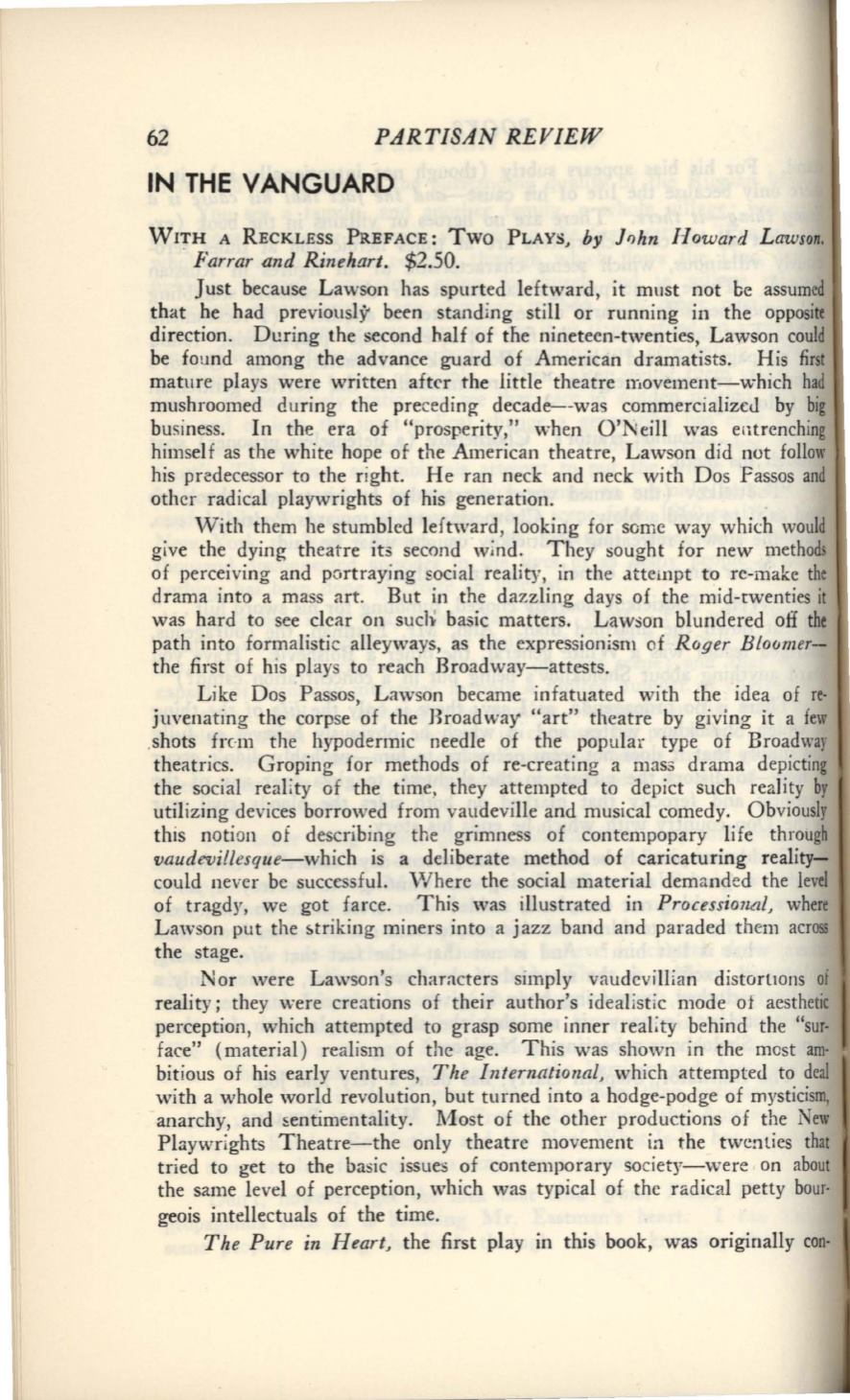
62
PARTISAN REVIEW
IN THE VANGUARD
WITH A RECKLESS PREFACE:
Two
PLAYS,
by ]fJhn Howard
Lawson.
.
Farrar and Rinehart.
$2.50.
Just because Lawson has spurted leftward, it must not be assumed
that he had previously been stand ing still or running in the oppositt
direction. During the second half of the nineteen-twenties, Lawson could
be found among the advance guard of American dramatists. His
first
mature plays were written after the little theatre movement-which had
mushroomed during the preceding decade--was commercialized by big
business. In the era of "prosperity," when O'Neill was entrenching
himself as the white hope of the American theatre, Lawson did not follow
his predecessor to the right. He ran neck and neck with Dos Fassos and
other radical playwrights of his generation.
With them he stumbled leftward, looking for some way whic:h would
give the dying theatre its second wind. They sought for new methods
of perceiving and pc.rtraying social reality, in the attempt to re-make the
drama into a mass art. But in the dazzling days of the mid-twenties it
was hard to see clear on sucl} basic matters. Lawson blundered off
the
path into formalisti c alleyways, as the expressionism of
Roger Bloomer–
the first of his plays to reach Broadway-attests.
Like Dos Passos, Lawson became infatuated with the idea of re·
juvenating the corpse of the Broadway "art" theatre by giving it a few
.shots
fron
the hypodermic needle of the popular type of Broadway
theatrics. Groping for methods of re-creating a mass drama depicting
the social reality of the time, they attempted to depict such reality
by
utilizing devices borrowed from vaudeville and musical comedy. Obviously
this noti on of describing the grimness of contempopary life through
vaudevillesque-which
is a deliberate method of caricaturing reality–
could never be successful. VVhere the social material demanded the levd
of tragdy, we got farce. This was illustrated in
Processio1z<ll,
where
Lawson pu t the
~triking
miners into a jazz band and paraded them across
the stage.
Nor were Lawson's characters simply vaudevillian distortwns oi
reality; they were creations of their author's ideal istic mode at aesthetic
perception, which attempted to grasp some inner real:ty behind the "sur–
face" (material) realism of the age. This was shown in the most am–
bitious of his early ventures,
The International,
which attempted to deal
with a whole world revolution, but turned into a hodge-podge of mysticism,
anarchy, and sentimentality. l\1ost of the other productions of the New
Playwrights Theatre-the only theatre movement in the twenties that
tried to get to the basic issues of contemporary society-were on about
the same level of perception, which was typical of the radical petty hour·
geois intellectuals of the time.
The Pure in Heart,
the first play in this book, was originally con·


